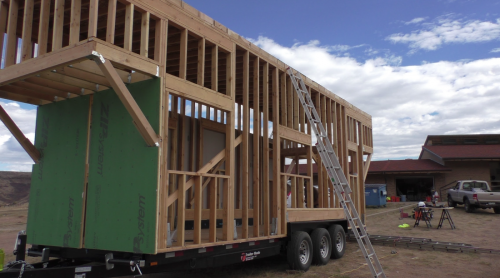Nearly six months ago, we launched SparkFun’s first Community Partnership Program. We hoped the program would provide increased opportunities for our friends in the community to collaborate with us and get support for their projects. While SparkFun has a long history of supporting teachers, Maker Faires, nonprofits and makers, we wanted to find a way to share the stories of all the innovative ways maker technology is being used to solve problems and have some fun.
Since January 2017, we have funded 101 projects from around the world (around 29 percent of applicants). Here are some of our favorites:
University of New Hampshire Extra Terrestrial Navigation Swarm
A team of mechanical, electrical and software engineering students at the University of New Hampshire, Durham, is taking a cue from nature and designing a swarm of fully autonomous, all-terrain robots for space exploration. The robots will be programmed with NavSwarm’s particle swarm optimization algorithm to search large areas of planets for water, natural resources and signs of life. Using an XBee module and a Raspberry Pi, the robots will communicate with one another, marking areas they travel and utilizing sensors.
Colorado School of Mines Tiny House
A student team at School of Mines in Golden, Colo., is designing and building a net-zero Tiny House using sustainable technology. Students majoring in engineering, physics and other areas of study have been building the 200-square-foot house since last summer on a 24-foot-by-8-foot trailer. Thanks to the generous support of community sponsors and donors, construction of the framing and exterior paneling is now complete. The next steps are installing the exterior metal sheathing, windows, HVAC, plumbing, interiors and a 1-kilowatt PV (photo-voltaic) system.
Space Apps NYC’s NASA Space Apps Challenge
Through this worldwide NASA Incubator Innovation program, grassroots organizers stage a weekend-long hackathon at local sites where teams collaborate with their fellow global citizens and utilize publicly-available data to design solutions for challenges posed by NASA, other governmental agencies, NGOs and a variety of institutions. Entrants responded to several prompts, including developing a tool that combines satellite data with crowd-sourced data from people on the ground to help firefighters identify where a fire has started, best paths for evacuation, or where a fire may spread to. Other prompts included crowd-sourced solutions to create visualizations that allow users to discover landslide data, or designing energy and space-saving furniture to use in habs for use on other planets. Check out the winning projects.
Hospital Escape Room
Jack Frey, a senior Interactive Multimedia major at the College of New Jersey, sent us a senior thesis project we couldn’t resist sponsoring. Hospital Escape is an interactive escape room experience that involves physical computing puzzles, wearable technology and a custom mobile app. “I think it would be awesome if people left my escape room having learned about new forms of technology that they can then explore and use to create their own projects," Jack wrote.
While many of our Community Partners are students or educational institutions, we also work with organizations like PACRITEX, who are using our hardware to track tornadoes in the Colorado plains region. Others include hackathons aimed at solving health challenges, DIY art galleries looking to support creative technology, or intrepid 12-year-olds trying to build their own Iron Man suit.
If you have a cool project you’d like work with us on by getting some free hardware or some engineering help, please reach out to us via our Community Partnership Program application. Stay tuned!







